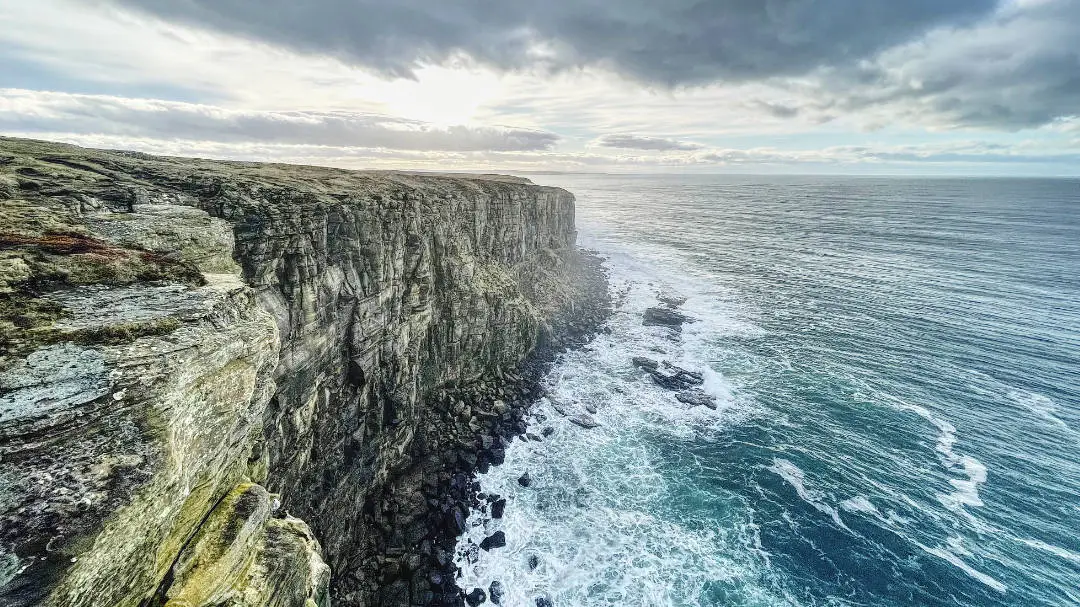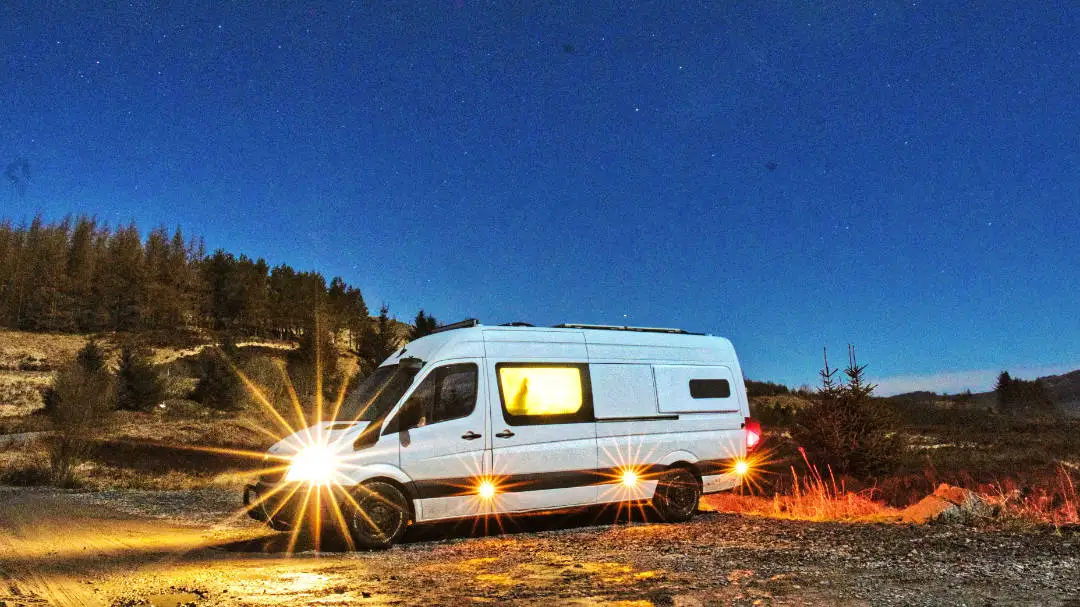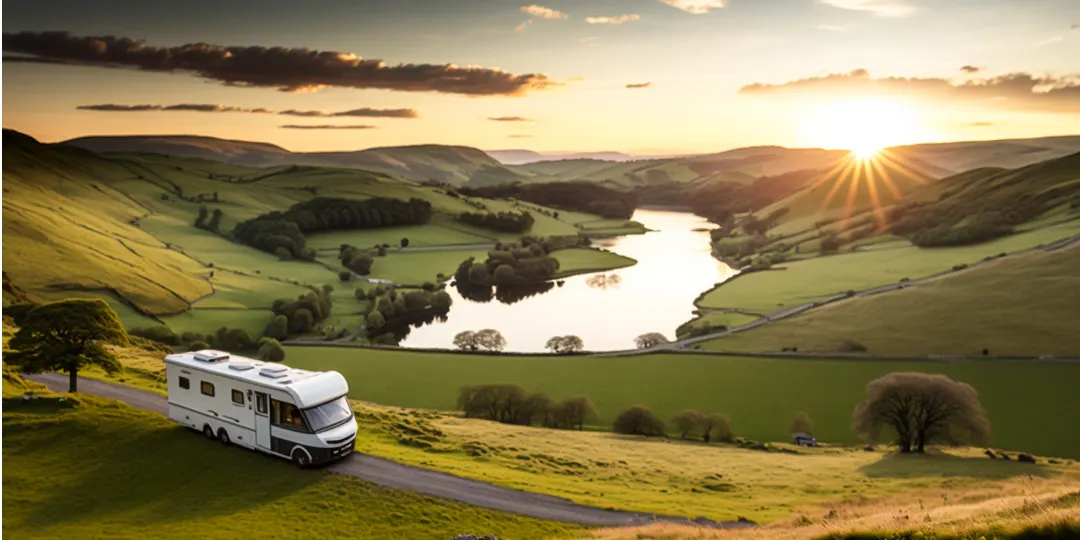Van Travel
Call us biased, but Scotland is one of the best countries to visit in a Campervan and Motorhome! (Yes, Scotland is our homeland but hear us out!) Not only is it incredibly easy to travel around, and unbelievably beautiful, but it is also motorhome and campervan-friendly, and attitudes to wild camping are more relaxed in Scotland than in the rest of the UK. For her size, she certainly packs a very powerful punch and a visit to Scotland is the place for any adventurer, nature lover, and whiskey enthusiast *Drams for days* Before you buckle up and blast 500 miles on the radio, Here is everything you need to know about campervan and motorhome travel in Scotland.

One of many epic forest roads.

Park up overlooking ben stack

Table of Contents
Scotland
Located in the northern part of the United Kingdom and is known for its stunning landscapes, rich history and vibrant culture. From the rugged Highlands to the rolling hills of the Lowlands, Scotland is home to some of the most breathtaking natural scenery in the world. The country has a rich cultural heritage, with many historic castles and iconic landmarks, including Edinburgh Castle and Stirling Castle. Scotland is also famous for its whisky distilleries, traditional music, and dance.
People and culture
Scotland is home to a vibrant cultural scene, with traditional music and dance, festivals, and events that showcase the country’s rich history and heritage. From the Edinburgh Festival Fringe, the largest arts festival in the world, to the Royal Edinburgh Military Tattoo, a celebration of Scottish military history, Scotland offers diverse cultural experiences. The country is also famous for its whisky, haggis, and tartan, which are symbols of Scottish heritage and tradition. Whether you’re a local or a visitor, you’ll quickly realise that the Scottish people are passionate about their culture and are always eager to share it with others.
Scots are very welcoming, hospitable, and for the most part, a jolly bunch. They are known for their openness, friendliness, and absolute love of good humour. They are mostly a polite bunch who are happy to help. Generally, attitudes towards campervanners and motorhomes are accommodating. People in big cities and areas that are used to tourists are very relaxed and friendly towards van life culture. However, it does have to be said that some areas up North, the islands, and particularly along the NC500 route, can be more reserved towards campervan and motorhomes. These people and communities have seen more of a negative impact brought to their areas by overpopulated tourism. Don’t let that put you off though.
Best time to visit
The best time to visit Scotland depends on your interests and what you would like to see and experience while you are there. For outdoor activities such as hiking and exploring the natural scenery, the summer months from June to August are ideal as the weather is mild and the days are long. Although you have to watch out for the dreaded midgey! If you’re interested in cultural events, the summer months are also the best time to visit with many festivals and events taking place, such as the Edinburgh Festival Fringe, the Royal Edinburgh Military Tattoo, and the Highland Games.
The winter months from December to February are ideal for winter sports and the Christmas markets. Generally doing a van tour of Scotland in the summer offers the best change of good weather, we have found the springtime can be optimum as you can get some lovely crisp sunny days and are not fighting the crowds and getting fined or moved on by wardens like you can in the summer when the bylaws come into effect (see bylaws section below)
Exploring
Like any country, there are too many must-see places to mention, but here is a little snapshot of places to go that won’t disappoint.
Things to see
- Edinburgh
The capital of Scotland is known for its historic castle, the Royal Mile, and the Edinburgh Festival Fringe - The Highlands
A visit to Scotland wouldn’t be complete without exploring the mystical and beautiful Highlands. bucket list destinations include the Isle of Skye, Loch Ness, and Glencoe - Stirling Castle
Located in Stirling is a fantastic medieval fortress is one of Scotland’s and well worth a visit - Glasgow
Scotland’s largest city is known for its Victorian architecture, vibrant cultural scene, and excellent shopping - Speyside
Whiskey lovers Heaven. - The Trossachs National Park
One of our favourite places in Scotland. A beautiful area of hills and lochs, with breathtaking scenery and outdoor activities - The Orkney and Shetland Islands
A group of islands off the northern coast of Scotland, known for their stunning landscapes, historic sites, and unique wildlife - Cairngorms
Scotlands top shelf: Mountains and snow sports extravaganza - Dumfries & Galloway
One of the best places to see stars in Scotland - Argyll and Bute
Islands and hidden West Coast Treasures - The Hebrides
Island living on the North West Coast - The Isle of Skye
Spectacular and wild island, easily reachable by Bridge from the Mainland of Scotland - North Coast 500
Undoubtedly the Best Roadtrip in Scotland UK
Local Cuisine
Scottish cuisine is known for its hearty, comforting dishes. Many traditional dishes and local delicacies include Haggis, different types of smoked fish, Salmon, Cullen skink, Oatcakes, shortbread, Butteries, IrnBru, and whiskey are just some of the yummy things waiting for you in Scotland. Expect to see dishes garnished with a lot of potatoes, and you won’t be hard-pressed to find a chippy (fish and chip shop) takeaways are a big part of Scottish Culture. Scotland does get teased for its stereotypical “unhealthy foods” like deep-fried mars bars, but they are a novelty opposed to a norm.
North Coast 500 route
The most famous route to take around Scotland in the van life community is the north coast 500. It’s a 515-mile route that starts and ends at Inverness castle and captures the whole of the north of Scotland. It is well mapped out and easy to follow, with most of the roads being both highly pleasurable to drive and stunningly scenic. If you are limited to time then this a great route which takes about 7 days at a leisurely pace. Check out our 7-day itinerary here
Edinburgh
Scotland’s capital city is absolutely fantastic as you look around at all the stunning architecture, you can’t help but get transported back in time. The city is built upon seven hills (which makes from a workout at times) and is home to many historic landmarks, including Edinburgh Castle, an absolutely incredible sight with the beautiful Royal Botanic Gardens at the bottom, well worth the visit. The Royal Mile, a historic street that leads from the castle to the Palace of Holyroodhouse, is a must-see for anyone visiting Edinburgh. The city is also home to a number of fantastic museums, and art galleries, including the National Museum of Scotland, the Scottish National Gallery, and the Royal Botanic Garden Edinburgh.

Loch lomond in all its glory
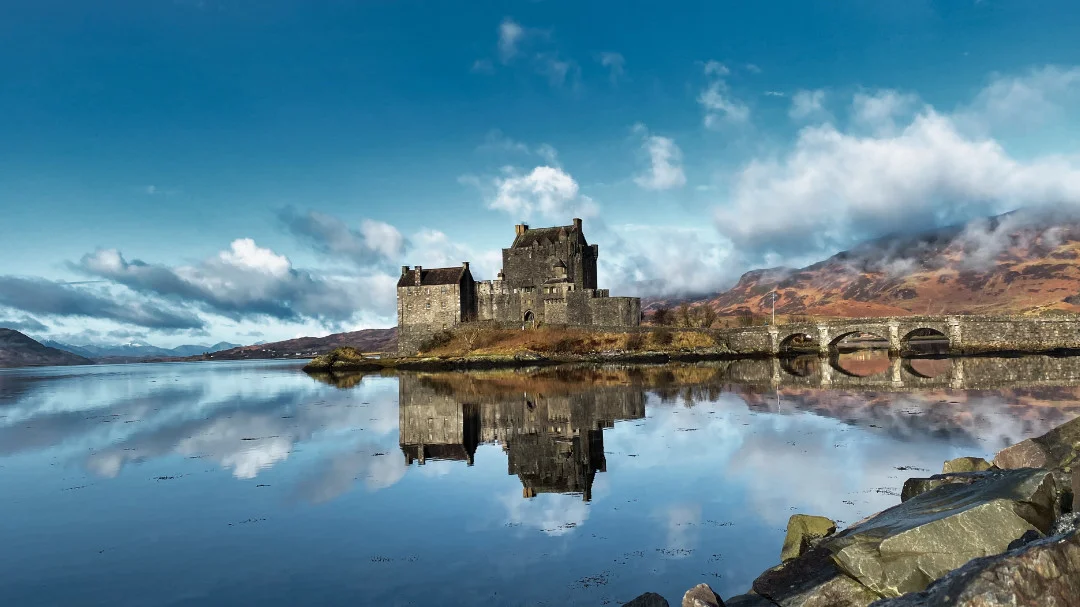
Eeilean Donan castle is unmissable
Getting there
We are at the top of the UK Island so there are countless roads connecting England and Scotland and Ferries joining Scotland to her Irish cousins Northern Ireland and Ireland. There are several options to visit the many isles of Scotland like: the Inner & outer Hebrides, Mull and Orkney and Shetlands.
Ferries
Currently, there are no ferries to Scotland from mainland Europe, however, one is said to be planned between Zeebrugge, Belgium and Scotland. Scotland is made up of the mainland “crown” of the UK and a bunch of islands: to the West- The Inner Hebrides. The Northwest- The Outer Hebrides. Far North- the Orkney and Shetlands Islands. They are almost all accessible and connected via Ferry. You can also get a ferry over to Northern Ireland quite easily from the southwest of Scotland at Cairnryan, or Stranraer. Calmac and Northlink are two of the biggest operators of ferries in Scotland. The ferry connection between Ireland and Scotland runs many times a day, every day of the week.
Borders
If you are arriving in Scotland via any other country in the UK there are no border restrictions. However, if you are arriving from an international destination the UK border rules apply.
Roads and navigation
The roads in Scotland are very well maintained and for the most part easy for all types of motorhomes, Campervans, and caravans. The ones that aren’t are heavily signposted and can be easily substituted for another route. (There are certain roads: such as the Bealach Na Ba/ Applecross pass on the North Coast 500 route, which are not suitable for caravans or some vehicles.) When deviating from Main and arterial roads onto coastal or country paths, roads generally become narrower, single-track and winding. Passing places are very common, and you are expected to drive sensibly, with care and consideration, when using them. As well as this you should be able to steer, drive and reverse with confidence along passing places. Double-check your knowledge of the Highway code.
Road rules
Drive: Left-hand drive
Speed limits:
30mph on single-carriageways & urban areas
70mph dual carriageways & motorways.
Tollways & vignettes:
N/A to Scotland
Low emission zones:
Low Emission Zones are being introduced: Glasgow from June 2023, Edinburgh, Aberdeen & Dundee from June 2024.
Fines & fixed penalties:
Check Here
Driving license requirements:
Check Here

You’ll find many single track roads

Sheeps aplenty on the back roads!
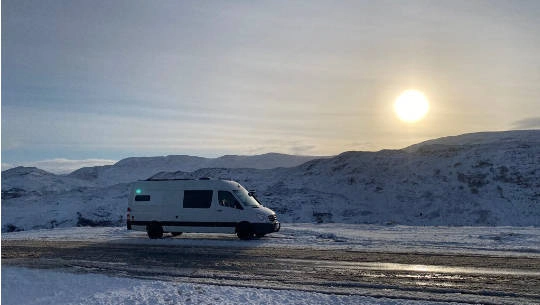
Winter driving can be epic, but treacherous
Driving Conditions
EXPECT RAIN and lots of it! We cannot stress this enough it rains ALL the time in Scotland. Driving in different seasons can heavily impact your journey. In the winter: heavy snow and ice may affect certain routes so be prepared when travelling during conditions. Always check the Met office guidance on travel and stay put during amber and red warnings. When travelling during winter, always keep your van and motorhome stocked with essentials: extra blankets in the cab, lots of water, and food. In case you get stuck or delayed on a road. Scotland Rains a lot! so be sure to check travel conditions during heavy rain also. In rural areas and on country roads You will encounter sheep everywhere! So drive slowly and be careful of the Haggis!
Parking
Parking is everywhere. Parking in inner cities during peak hours (Mon-Fri 9-5) can be expensive and hard to come. Depending on the council, parking in the cities is usually paid for (sometimes free on Sundays, weekends & evenings). For paid parking, there will always be a metre and you can always use an app like RingGo.
Leave the big city behind and you will find a Big Blue P almost everywhere. You’ll always find parking near a viewpoint, tourist destination and plenty of rest stop laybys along motorways and main roads. Some allow overnight parking and always check signs and information boards before hand.
Route and road trips
For such a small country there is a surprising amount of routes that you can take to make the most of your time there. Many of the routes lead directly from one to the next so it’s quite easy to make your way around and see all the must see if you have a few weeks to play with.
- The North Coast 500
Best avoided in peak season as it gets extremely congested - Argyles Secret Coast
fantastic, rugged roads and spectacular views - Gairloch Scenic Route
Some of Scotland’s best landscapes - Victorian Heritage Trail
Through Royal Deeside through Some of Queen Victoria’s favourite spots. - Gallow Forest Park
Biggest forest and the best star gazing.
Motorhome and campervan hire Scotland
There are many RV rental companies operating out of the central belt of Scotland: Glasgow and Edinburgh. Some reputable local companies: Go Explore Scotland, and Atlas motorhome hire. Further North you have: Scottish Campervan Rentals and Scottish Tourers.
You may also want to check popular campervan companies like Indie Campers, Bunk Campers and Goboony.
Scotlands country code
Wild camping in your motorhome/campervan
Mostly Wild camping and overnight parking in Scotland is tolerated. Avoid Parking in areas with prohibited parking like: a passing place, an emergency layby, or an entranceway that needs to be kept clear should be avoided. Parking there will either get you fined or moved on. The same goes for private land, always seek to approve before parking and best avoid if you can’t. Some areas will have clear signs with overnight Camping information and where to pay for parking like the forest commission sites and Loch Lomond. If you follow the signs you will usually be ok and if there are no signs, it is generally fair game! If you are moved on, do so with compliance and politely! The rule of thumb is to always read parking information signs and follow these rules for wild camping. We wild camped for 2 months whilst in Scotland and found it easy and great fun. Galloway has the best wild camping we found. Check out these places along the NC500 too.
You need these apps for finding overnight parking, free overnight parking and campsites. They are all amazing and really help you.
Scotlands byelaws
During certain times of year to manage tourists and visitor congestion and to keep litter to a minimum. Scotland passes Camping “Byelaws” in some National parks, mainly at Loch Lomond and the Trossachs National park. They come into effect on the 1st of March and run until the end of September. They require you to have a permit when camping or using a motorhome in the area. The permits cost £4 for a motorhome in use within a “byelaw” area from 7 pm-7 am and you can stay for up to 3 nights. Permits are really easy to get. They are all bookable online or on-site and can be booked in advance or at the moment, scanning a code on a signpost. Book here for a permit.
Forestry commission
The Forestry Commission Scotland looks after all of the forests and woodlands of which we have plenty! The forest lands come under the same code as the Scottish Outdoor Access Code.It’s not surprising that some of the best, most remote, and wild camping are located in these forests. They are welcoming of motorhomes and Campervans and have designated overnight parking zones called the Stay The Night scheme that runs during peak holiday seasons. Not all sites are part of the scheme, so remember to check their website beforehand.
Campfires, well, everyone loves them, but they can be really dangerous if not correctly handled. To be cautious, I would only recommend using a portable fire pit, these sit off the ground in an enclosed dish and quite often double as a BBQ grill. These are much easier to manage and can be ignited, set up and packed down quickly and safely. If you must set up a fire, do it only in areas that it permits and do not under any circumstances set up fires in areas with no fire signs, like forests.
Campsites
With a total of 623 designated campsites in Scotland, you’re never far from facilities, rest and camping! Most campsites will have facilities to top up on fresh water, dispose of rubbish, charge electricity, do your laundry, and dispose of grey and black water. You can pay for an annual subscription to a few different camping clubs for discounts and events, check out: The caravan club and The camping and caravanning club

A typical camping experience in Scotland

All the big markets are open 7 days late.
Shopping, supplies and amenities
Like the rest of the UK there is plenty of places to buy your necessary food. All the big supermarket chains are here such as Lidl, Aldi, Tesco and Asda. You can also check out some of the smaller local shops including the Spar if you are in a more rural location.
Motorhome, campervan and camping stores
Motorhome supplies are generally available at most caravan, campervan and motorhome dealerships: some in central Scotland with a large selection of accessories include:knowepark caravans and Duncans Caravans and Camping.
Cost of Living
I would say Scotland can be marginally cheaper than the rest of the UK and England, especially if you are doing your shopping in more rural places and the attractions here can be cheaper, on the whole, though it is similarly priced with the rest of the UK. Prices are a lot high in Edinburgh- but that’s a given!
Average prices
- Coffee £2.95
- Milk £0.98 per litre
- Loaf of bread £1.08
- Potato (1kg) £0.84
- Meal for 2- mid-range restaurant £60.00
- Domestic Beer 1/2 litre £4.00
Public toilets
You may struggle to find a bin in really remote places but that goes without saying. The obvious rule about bins here is to keep your litter on you until you find a bin, use a trasharoo or old rucksack tied to the back of your van to keep rubbish out of your van.
Free water taps
You will always be able to top up for a fee at a campsite and caravan park. Prices can go all the way up to or over £10 to dump and top up on water, so it’s always handy to stock up on extra bottles of water in the back of your van just in case, you can literally go to Aldi and fill up your tank with bottled water for less than £10.

Wifi is generally good until the highlands

Free chemical dump loch Clatteringshaw

Pumps are self-service like the rest of UK
Grey and black waste disposal
Use the app CAMPA to search for disposal sites all around the UK. It lists all the places you can dump your grey and black waste. If you can’t get to a campsite you can drain your black water waste into a public toilet. (make sure it’s not a composting toilet) You can also dump your grey water over a drain at the car wash also, but only if your grey water just contains natural soap and water and nothing else: no food scraps, fats, oils, chemical detergents or other nasties.
Lpg pumps
Petrol stations
Scotland is well served by Petrol stations: the main ones being Esso and BP. Use this petrol station finder if you need to find a place to fill up.
Cellular networks and wifi
Overall cellular networks, 4G and wifi are good in Scotland. Not all networks have the same quality coverage though. We found the best one to be EE for network coverage. you can buy an EE sim easily from a store and top up Pay As You Go. Make sure you have a good router, we use a netgear one and its great!
Emergencies and safety
Although Scotland is breathtaking the mountains can hold some risks, especially with the fact the weather can flip dramatically in a short space of time. If you decide to explore on foot, make sure you stalk up with some sensible supplies such as water and a weatherproof jacket and additional supplies in case something happens. For the most part, Scotland is a very safe country to visit with the locals being more than happy to help if you are in a jam. That said like most places if you end up in certain areas crime can be quite high. Try to avoid council estates and use some common sense when and where you choose to park up and take advantage of all the apps and previous comments made about safety.
Visitors to Scotland can receive treatment for accidents and emergencies free of charge.
Emergency numbers are 999 and 112.
For non-urgent NHS information, you can call: 111
For non-urgent police information or to report a crime you can call the police on: 101
A detailed list of emergency situations and how to call is available here:
For Roadside Assistance and breakdowns contact the AA on 03330 046 046 or online at The AA.
Download the app What.3.words, it is an accurate and easy-to-use locator that the authorities in the UK use, so if you ever get into trouble you can quickly and accurately tell them where you are!
Cold Water shock and drowning can be a problem in quite a few places in Scotland/ UKso be very careful beside and near bodies of water. Places like Loch Doon are extremely dangerous all year round, even in the summer. Familiarise yourself with Cold Water Safety

Follow you gut when parking up
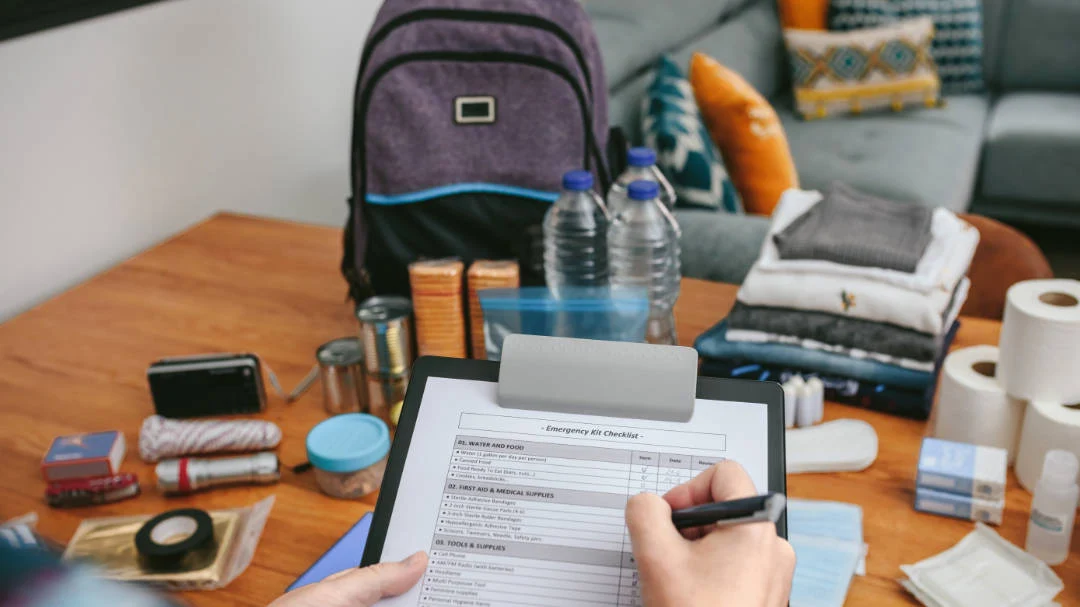
Have a good grab pack ready for walk and other situations
Travelling with pets Scotland
Like the rest of the UK, there is plenty of veterinaries services and pet shops to choose from. Both independent and chain. Here are a couple of places you can check; vets for pets and pets at home.However, each clinic can vary from place to place so checking relevant reviews depends on where you are advisable. As travelling to Scotland by camper anyway, apart from through England or N.I. is impossible, you will have already gone through the necessary security checks. However, you can either check out our essential guide to the UK or visit the gov. website for more information.
The usual requirements are necessary for travel with pets in the whole of the UK and Europe but always do your own research and check.
Pet Identification: Microchip
All vaccinations and boosters are up to date
Rabies Vaccine up to date
Animal Health Certificates if leaving and entering the UK.
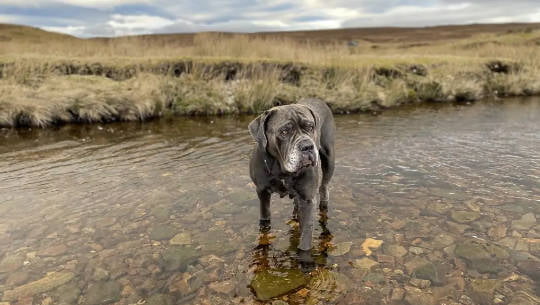
Leo hates swimming but loves paddling

Rocky our cat using his favourite exit
We hope you enjoyed reading our Scotland guide as much as we enjoyed writing. Please feel free to sign up or leave a comment below if you enjoyed the read!
